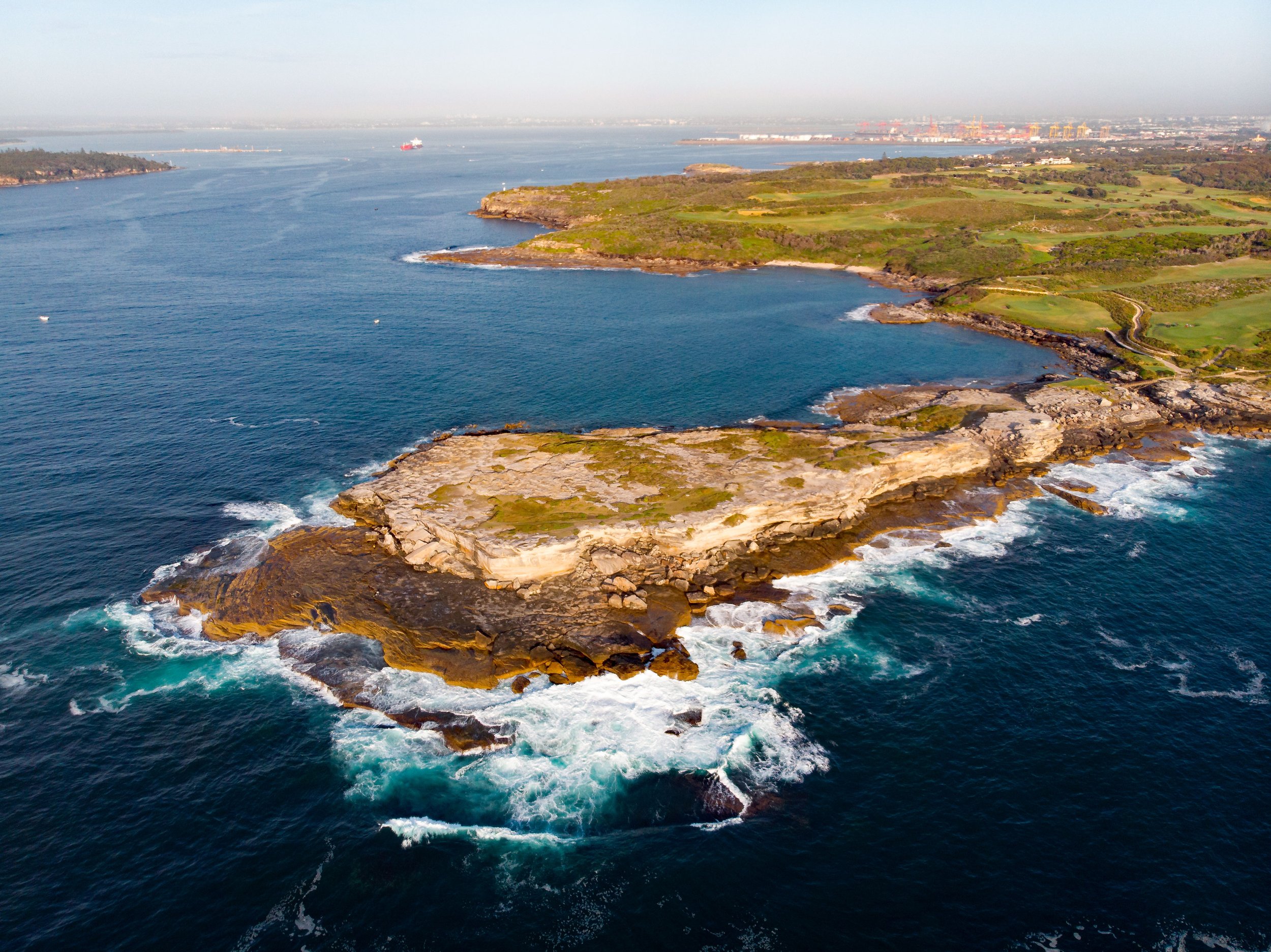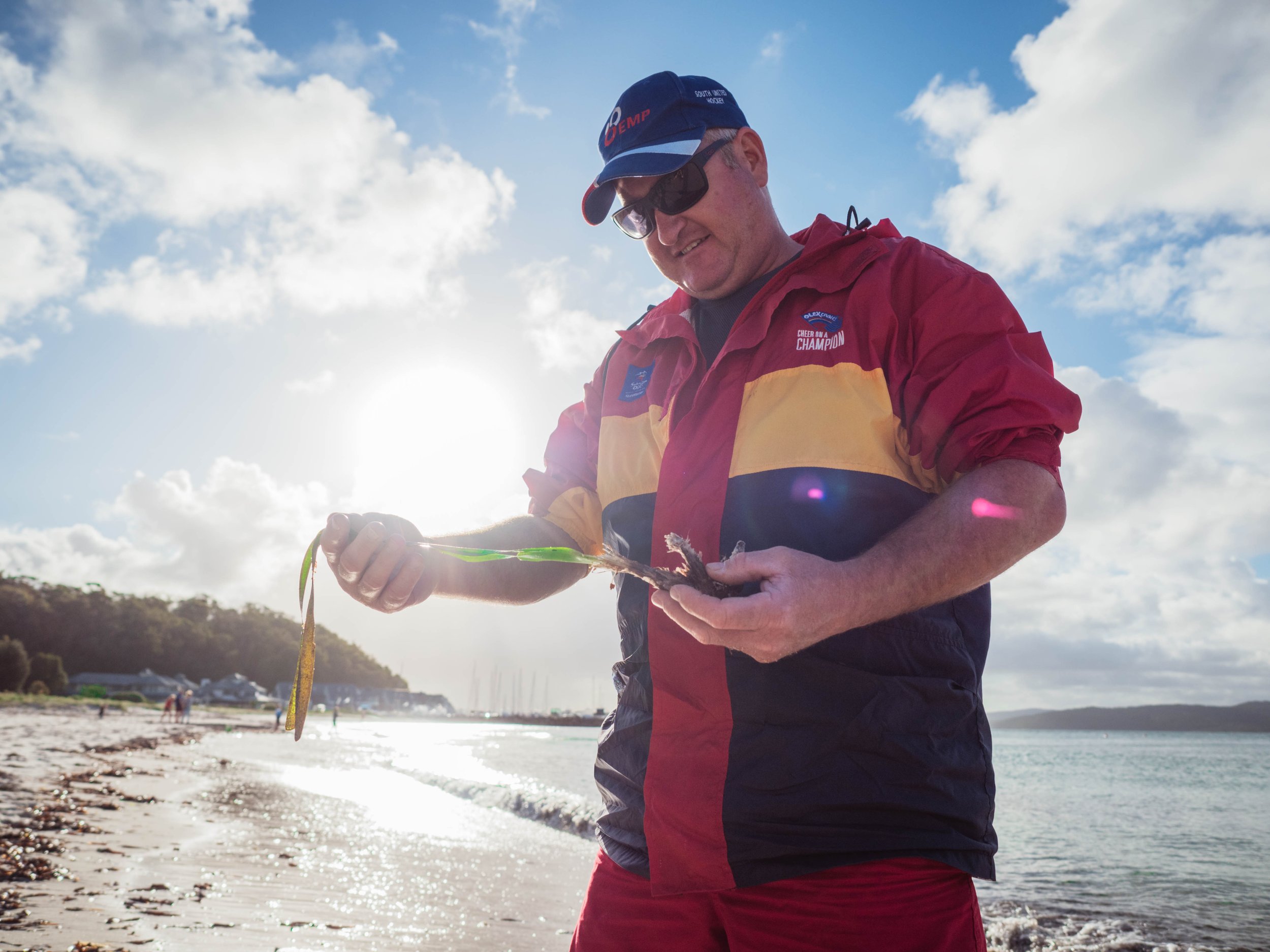
Gamay Botany Bay
a SCUBA diver’s haven
One of Australia’s most developed estuaries
Gamay houses major air and seaport infrastructure, and is fringed by dense industrial and residential areas. Despite this large human influence, the bay maintains a diverse marine ecosystem, popular with SCUBA divers and naturalists. It is home to a wide variety of marine critters, some of which are iconic species like the Weedy Sea Dragon (Phyllopteryx taeniolatus) and rare species like the Red-fingered Anglerfish (Porophryne erythrodactylus), which is only known from scattered localities between the Sydney region and Jervis Bay (NSW). Photos courtesy of John Turnbull.
However, sensitive habitats of Gamay Botany Bay, like Posidonia meadows, have declined dramatically and need a helping hand. This map shows the location of Gamay Botany Bay on the NSW coastline.
The Posidonia found here is one of six populations classified as endangered by the NSW Government.

Posidonia needs plenty of light and stable sediments to grow
Coastal development can reduce the light that passes through the water, either by suspending sediments in the water column during construction or adding structures that create shade.
Often, hydrodynamics change when structures are added to the coast, causing sediments to move and erode seagrass meadows or even smother them. Development activities like dredging have been widespread in Gamay since European settlement, and entire sections of the bay’s former seagrass meadows have now disappeared.
In this project, Operation Posidonia conducted restoration action in targeted areas near Foreshore Beach, in waters managed by the Port Authority.
Photo credit: John Turnbull
Community-driven Posidonia restoration
All hands on deck
Posidonia grows very slowly, so even in places where threatening processes have subsided, it doesn’t recover on its own. For the restoration action in Gamay Botany Bay, Operation Posidonia volunteers from the local community helped with the collection of beach-cast fragments of Posidonia to be replanted underwater by SCUBA divers in areas where the natural meadows had been damaged.
Photos courtesy of Grumpy Turtle Creative.
Collaborators
Gamay Rangers
The Gamay Rangers are an Indigenous Ranger group from Gamay, Botany Bay, based in La Perouse. They are the first Indigenous Ranger group operating in an urban area. Read about their important work here.
For this project, we worked closely with the Rangers on the ground to deliver our Posidonia restoration project. The team is highly skilled in environmental management, boating and free diving. We also provided two-way training opportunities, such as training in marine ecology techniques.
The Port Authority of NSW
Over more than ten years, the Port Authority of NSW has undertaken significant ecological monitoring around the Penrhyn Estuary and Foreshore Beach areas of Botany Bay, including monitoring the health and extent of local seagrass meadows.
In late 2016, Port Authority invested $3.7 million to construct three groynes along Foreshore Beach to mitigate beach erosion, sediment transport, and to stabilise sediments to protect and improve conditions for seagrass.
The great news is their work and investment to stabilise sediment movement on the seafloor has already seen the ecological recovery and re-establishment of Zostera and Halophila seagrasses in the area, signalling conditions may now be favourable to re-establish Posidonia.
The Port Authority of NSW has been a key partner in our project in Gamay Botany Bay and is supporting the establishment of a seagrass holding pen for temporary storage of our Posidonia transplants nearby to Foreshore Beach.
Operation Posidonia acknowledges the Traditional Custodians of the land & waters where we conduct our research. We recognise their continuing connection to these places, and thank them for protecting this coastline and its ecosystems for many generations. We extend these respects to Elders past and present, and extend these respects to all First Nations people.














